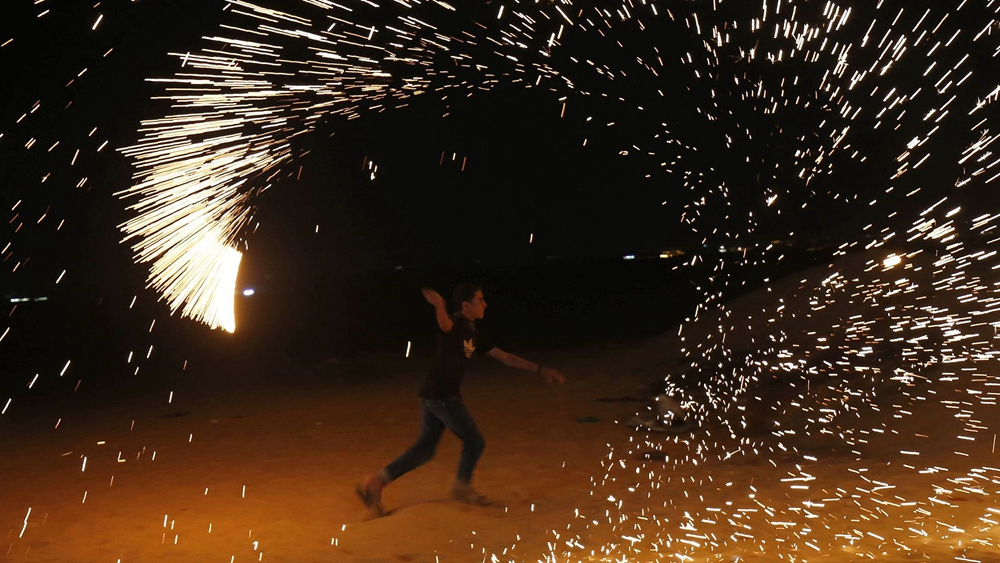It's nearly 10:00 p.m. when young Palestinian men begin banging drums and chanting songs, while others attach incendiary devices to balloons, all closely watched by Israeli snipers on the border.
For six months, Palestinians have often gathered along the fence between the Gaza Strip and Israel for violent daylight demonstrations against Israeli policies. But in recent weeks they have deployed a new tactic: "night confusion units".
Protests can go on until the early hours.
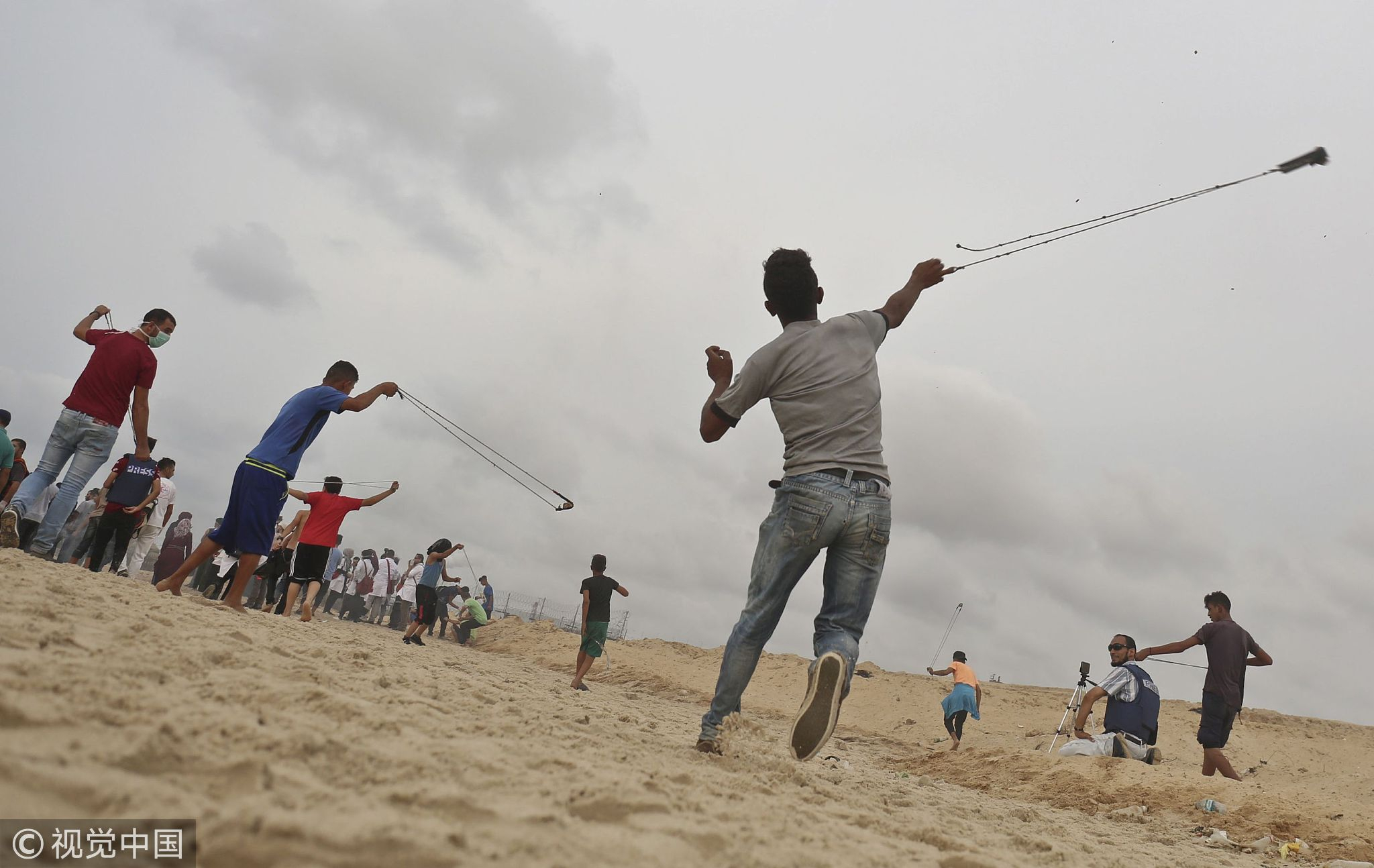
A Palestinian protester throws a stone towards Israeli forces during clashes on the beach near the maritime border with Israel, in the northern Gaza Strip, October 1, 2018. /VCG Photo
A Palestinian protester throws a stone towards Israeli forces during clashes on the beach near the maritime border with Israel, in the northern Gaza Strip, October 1, 2018. /VCG Photo
Organizers say they aim to force the Jewish state to ease its decade-long blockade of Gaza, but residents in nearby Israeli communities say their lives are being destroyed.
Israel accuses Gaza's rulers Hamas of controlling the protests.
Hamas says it backs the demonstrations but is not commanding them and that the idea for nocturnal activity came from protesters themselves.
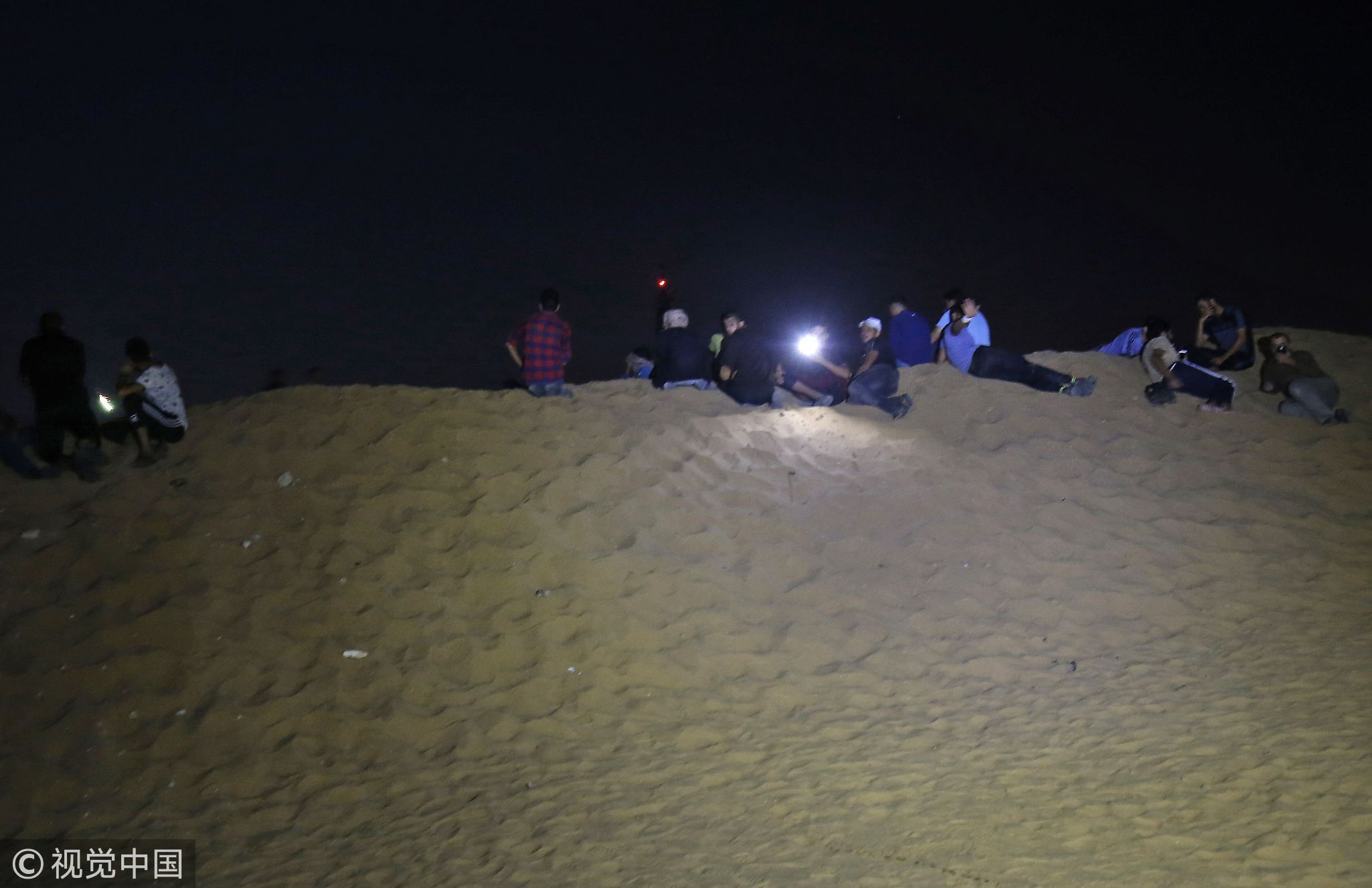
Palestinian protesters calling themselves the "night confusion units" gather near the Gaza-Israel border east of Rafah in the southern Gaza Strip, September 26, 2018. /VCG Photo
Palestinian protesters calling themselves the "night confusion units" gather near the Gaza-Israel border east of Rafah in the southern Gaza Strip, September 26, 2018. /VCG Photo
"Every day the young men on the border invent ways to develop marches and the most recent was the night confusion unit," Hamas spokesman Hazem Qassem said.
An Israeli military official, who did not want to be named, said the night protests do not pose a new challenge.
"Our soldiers, including our snipers, have night vision equipment," he said.
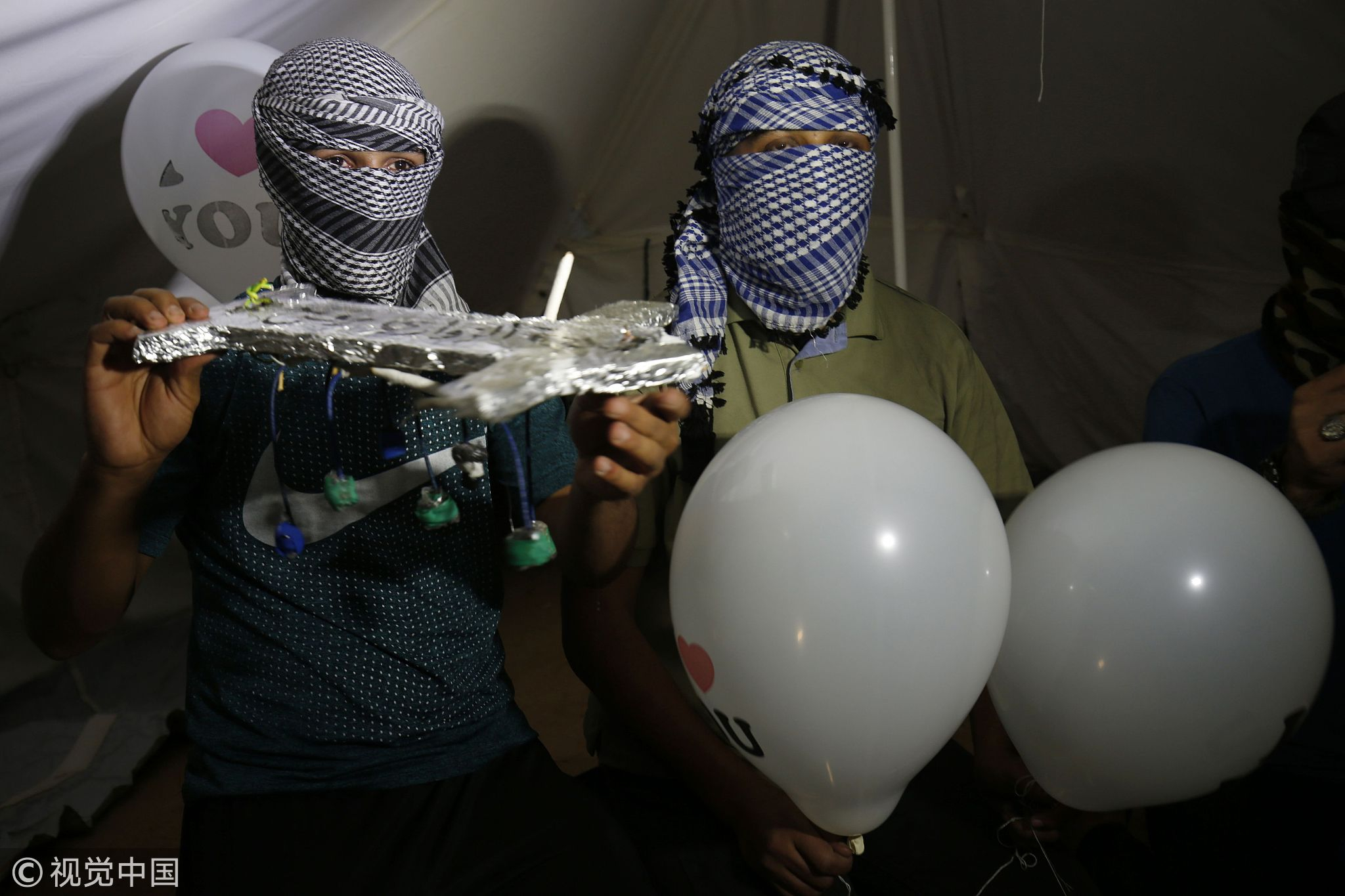
Masked Palestinian protesters calling themselves the "night confusion units" hold incendiary devices attached to ballons to be flown towards Israel, near the Gaza-Israel border east of Rafah in the southern Gaza Strip, September 26, 2018. /VCG Photo
Masked Palestinian protesters calling themselves the "night confusion units" hold incendiary devices attached to ballons to be flown towards Israel, near the Gaza-Israel border east of Rafah in the southern Gaza Strip, September 26, 2018. /VCG Photo
The border protests since March 30 have been labelled the "Great March of Return" because they call for Palestinian refugees to return to their former homes inside what is now Israel.
More than 700,000 Palestinians fled or were expelled in the 1948 war surrounding Israel's creation.
At least 194 Palestinians in Gaza have been killed by Israeli fire since the protests began. One Israeli soldier has been killed in the border area over the same period.
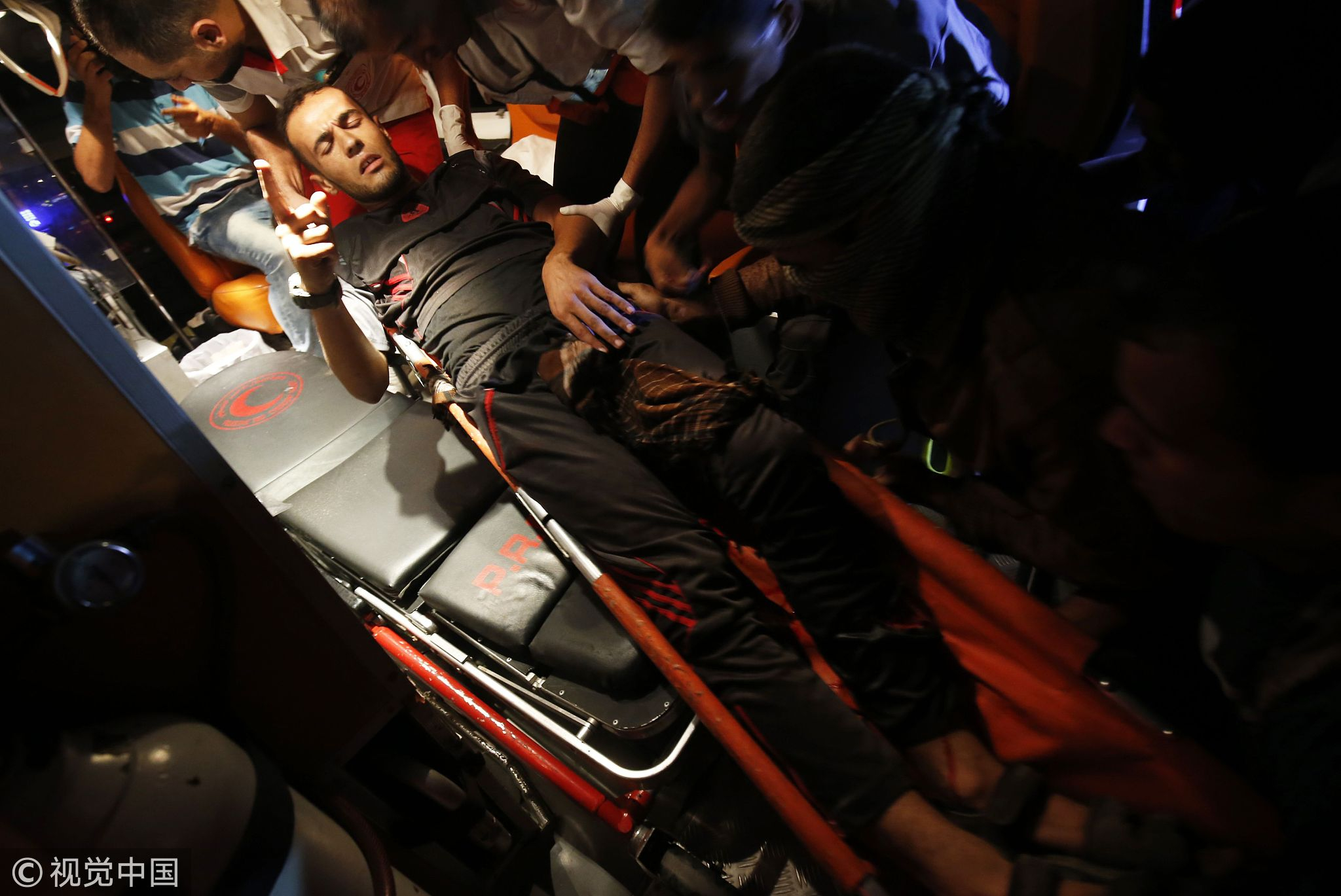
Palestinian paramedics carry away an injured protester from a group calling themselves the "night confusion units" near the Gaza-Israel border east of Rafah in the southern Gaza Strip, September 26, 2018. /VCG Photo
Palestinian paramedics carry away an injured protester from a group calling themselves the "night confusion units" near the Gaza-Israel border east of Rafah in the southern Gaza Strip, September 26, 2018. /VCG Photo
Israel says its actions are necessary to defend the border and stop infiltrations and attacks, which it accuses Hamas of orchestrating.
But Israel's use of live fire during the protests and clashes has drawn international concern.
Palestinians and rights groups say demonstrators have been shot while posing no real threat.
Source(s): AFP

